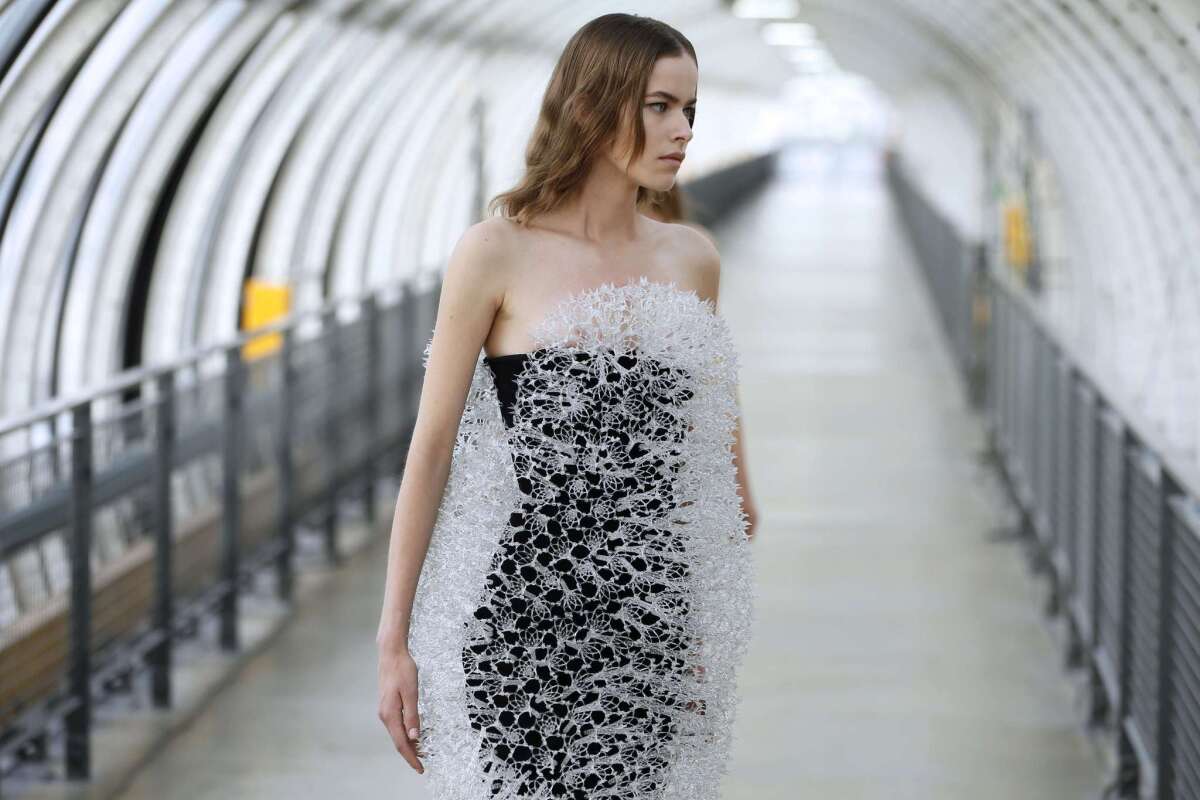Paris Fashion Week: Iris Van Herpen

Reporting from Paris â When people want to be dismissive of the fashion industry, they often say something like, âFashion is not astrophysics.â
Except sometimes it is.
As inspiration for her spring collection titled âMagnetic Motion,â Dutch designer Iris Van Herpen visited the worldâs largest particle collider at the European Organization for Nuclear Research in Switzerland to check out the thousands of high-powered magnets that make it work. (Cool, right?)
The resulting collection was a beautiful collision of nature, technology, engineering and art. âI find beauty in the continual shaping of chaos,â she wrote in the show notes, explaining that she had collaborated with architect Philip Beesley and artist Jolan van der Wiel on some materials, as well as creating a 3-D-printed dress with architect Niccolo Casas.
All a bit pretentious? Maybe, but you have to admire the intensity of her future-thinking vision. And the workmanship was equally audacious.
She brought unique, 3-D effects to clothing by using injection molding and laser cutting techniques to create intricately chiseled forms on darkly sexy dresses, jackets, trousers and skirts that seemed tailor made for the concert stage. Other pieces came covered in what looked like tiny claws, magnetic whiskers or crystal mesh veils. (One particular mini dress, an hourglass shape with pronounced hips, had Beyonce written all over it.) And in the truly far-out realm were crystal forms encasing the body like ice sculptures. (No, I donât know how you would sit.)
Van Herpen, winner of the 2014 ANDAM Fashion Prize, which includes more than $300,000 in prize money and mentoring by Kering Chief Executive Henri-Francois Pinault, is certainly a talent to watch. If she can continue to work on translating her intellectual approach into something commercially viable, one even wonders if she could take up the mantle for the avant garde left by the late Alexander McQueen.
For the latest in fashion and style news, follow me @Booth1 on Twitter.







